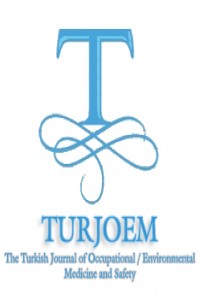Abstract
References
- Sanlıurfa Branch Office, Council of Forensic Medicine, Ministry of Justice, Sanlıurfa, Turkiye
Abstract
The objective of postmortem toxicological examination is to determine chemical
substances caused or contributed to death. When
body fluids (blood, urine etc.) are contaminated or not obtained due to
decomposition, internal organ tissues may
be used as alternative samples.
In advanced decomposed bodies that any tissue couldn’t be determined
Entomological Samples (ES) also may be used as an alternative.
In our study, two decomposed cases which were
performed autopsies, were evaluated. It is aimed to investigate contribution of
drugs and their amounts which were identified in entomological and tissue
samples derived at autopsy, to determinate cause of death. In addition, it was
discussed whether ES evaluated as a
supporting sample to other tissues derived at autopsy.
Case 1: A 29-year-old male body of
which insect activity and postmortem changes of decomposition were began. In
his autopsy, some tissue samples (liver, muscle) and ES were taken. Samples were analyzed in LC-MS-MS. JWH-018
was determined as 2.53ng/g in liver, <1ng/g in muscle, <1ng/g in ES
(larva in distilled water).
Case 2: A 21-year-old male body which
carries same features with case 1 is practiced. In his autopsy, some tissue
samples (liver, bone marrow, muscle) and ES were taken. 6-MAM was determined as 0.19ng/g in
liver, 0.14ng/g in muscle, 4.28ng/g in ES. Morphine was determined as 68.04ng/g in liver,
35.79ng/g in muscle, 1.77ng/g in bone marrow, 50.43ng/g in ES, 21.52ng/g in ES (larva in distilled water).
It was considered that entomotoxicology
may contribute to estimation of cause of death, especially to determine the abused
substances firmly. However, entomotoxicology may not reveal whether substance
is in lethal dose or not, in drug induced deaths; it can provide accurate
information about use of drug. So ES
are necessary materials in toxicological analysis.
References
- Sanlıurfa Branch Office, Council of Forensic Medicine, Ministry of Justice, Sanlıurfa, Turkiye
Details
| Journal Section | Articles |
|---|---|
| Authors | |
| Publication Date | February 16, 2017 |
| Published in Issue | Year 2017 Volume: Volume 2 Issue: İssue 1 (1) - 2.İnternational Congress Of Forensic Toxicology |


